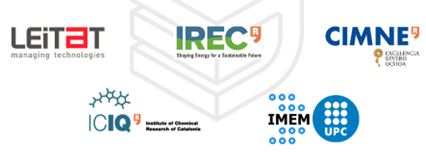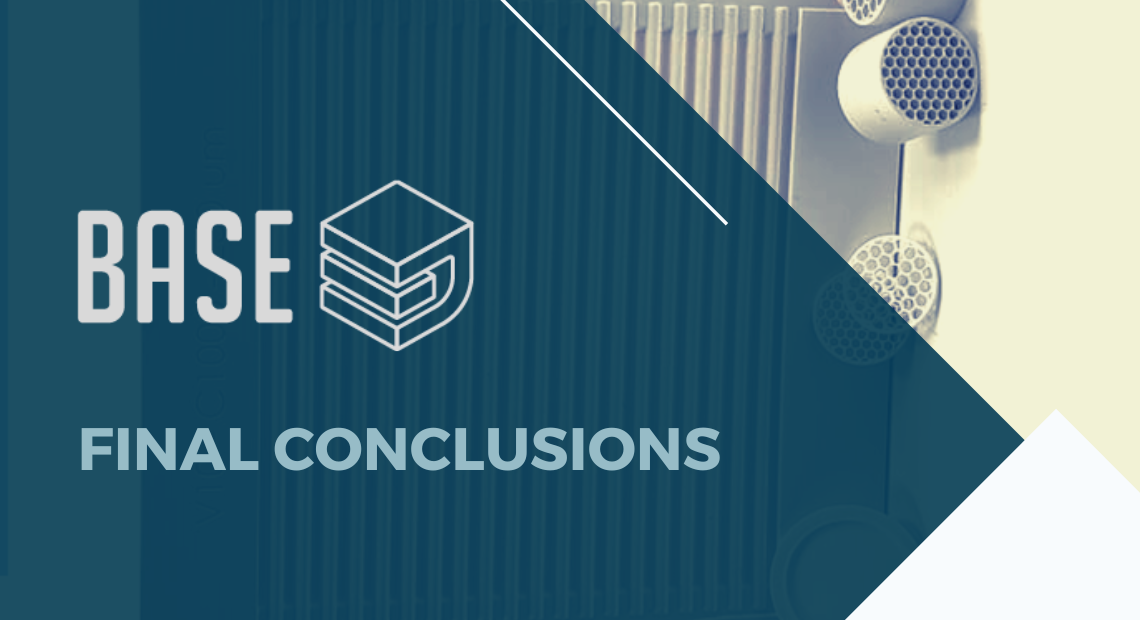The project held a final meeting on December 15th 2022 at CIM-UPC where all WP leaders exposed the main conclusions and results of the BASE3D project, followed by very interesting round tables with companies such as Alstom, Ames, HP, Renishaw and Seat.
The main goal of the project was to develop different additive manufacturing technologies for different applications from energy to biotechnology. With this purpose, the project was divided into four different work packages:
- FUSE3D was dedicated to the development of additive manufacturing technologies that require the fusion and extrusion of the feedstock materials. The results allowed to generate composite feedstock printing wires that can improve the mechanical properties and surface of different pieces, with special focus on the biomedical and dental applications.
- INK3D was dedicated to the development of new ink formulations for ink based additive manufacturing technologies showing improvement on the resolution and manufacturing of complex structures, the improvement of the mechanical and functional properties, and in the biomedical field the improvement of the functionality and compatibility with biological processes. This is focused both in the design of inks and in the design of printing equipment with improved benefits.
- LIGHT3D focused on laser and visible light sources-based 3D printing technologies. In this work package, a wide range of technologies and materials were tested (polymers, metals and ceramics). The fabrication approaches have required different scales of laser power and the developed samples and devices has been tested in applications from the biomedical to the energy sectors.
- Hybri3D worked on the hybridization of the different additive manufacturing technologies for special applications. The results of this work package were the development of new printers and feedstocks materials that can be used hybridising printing technologies such as MIP-SL and DIW.
BASE3D had a total budget of 3.7 M€ and the BASE3D consortium is formed by 13 partners across Catalonia: CIM-UPC (leader), ICIQ, IBEC, EURECAT, LEITAT, IREC, UPC, CIMNE, HSJD, IQS, UdG, UB i UAB. The LIGHT3D work package, is formed by LEITAT (coordinator), CIMNE, ICFO, ICIQ, IREC i IMEM.

Marc Torrell and colleagues from the Nanoionics and Fuel Cells group (NISOFC) from IREC, have contributed with different impacting results on the achievements of the LIGHT3D work package. More specifically, NISOFC researchers have successfully developed new formulations and thermal treatments to print functional ceramic specimens by the use of SLA technology, based on low-power LASERS that cure a slurry composed by a photo-curable monomer and the functional ceramic load. The used ceramics (YSZ, YbScSZ) are the state-of-the-art materials employed as high temperature fuel cells and electrolysers, the base of the so-called Solid Oxide Cells (SOC). The SOC technology is the most efficient mature technology for hydrogen use and generation. The possibility of generating devices with special features and geometries, which are only possible to be manufactured using 3D printing, give numerous advantages in terms of power density, mechanical resistance, stack sealing, and so on… all key points for the development of SOC technologies. In the framework of this project, NISOFC researchers have proposed new geometries for SOC and the initial results on the use of the formulated pastes for the 3D printing of catalytic supports.

It is important to note that the defined activities and achieved results has been presented by S. Anelli et al. at the 15th European SOFC & SOE Forum (2022, Lucerne, Switzerland) and within the Master thesis defended by Santiago Marquez (UB, 2022).
As an overall conclusion, the project proved that new formulations of functional ceramic-based slurries can be done to be printed by SLA 3D printing technology and generate complex geometries for SOC electrolytes and catalytic supports.
Acknowledgements: The project is co-financed by the European Union through the European Regional Development fund (ERDF) Operational Programme Catalonia 2014-2020 and supported by the Secretary of Universities and Research of the Ministry for Business and Knowledge of the Government of Catalonia.




